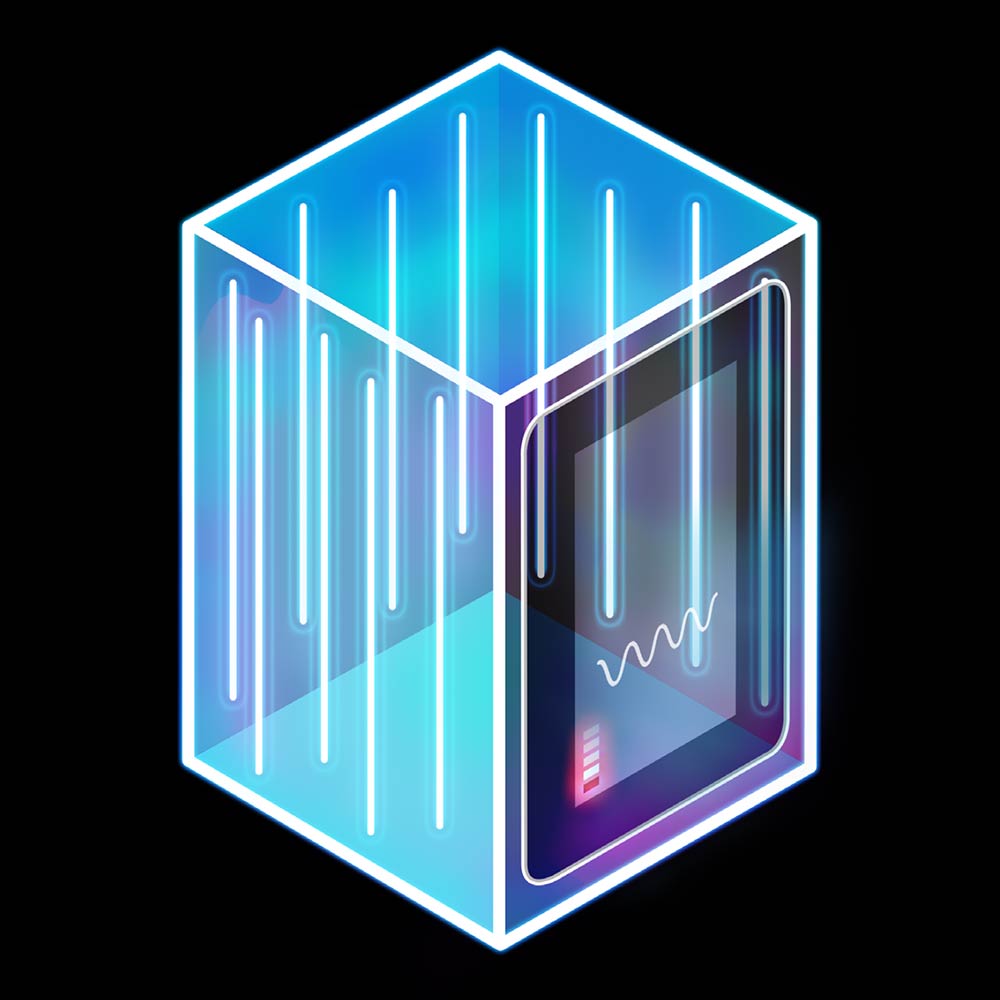Tackling COVID-19 with Light
Optica Blog
Tackling COVID-19 with Light
Terence Rooney, Senior Program Manager, Students and Early-Career Professionals
We Are OSA is a new series of podcasts, blogs and articles featuring inspirational stories from scientists & engineers.
Transcript
Megan: Welcome to the We Are OSA Podcast, a new series featuring inspirational stories and perspectives from scientists and engineers, improving the world. In this episode, we hear about an effort by OSA members and global student chapters, helping to fight COVID-19. We'll hear from several leaders in the community.
[00:00:23] who’ve developed a chamber to sanitize N95 masks. They produced these chambers with their grassroots organizations and installed them in hospitals in developing countries that needed them most.
[00:00:38] Tom Baer: It was critical here in California, right from the start. The hospitals are at their limit as far as ICU beds.
[00:00:44] and we had obsolete stores of N95 respirators. We were totally unprepared as a country for this.
[00:00:52] Megan: This is Tom Baer. He's the executive director of the Stanford Photonics Research Center at Stanford University. He's also a former president of The Optical Society. Throughout his career, Tom has always been interested in the societal impact of his work, and he realized that the science of light could play a major role in combating the pandemic.
[00:01:15] Tom Baer: I should take a look at what optics and photonics could do in the COVID-19 pandemic and response.
[00:01:21] Megan: Everything from at-home diagnostic tests to monitoring oxygen, saturation symptoms is being made possible through optics and photonics, but these solutions have a long lead time. Scientists are still working on them and Tom wanted to do something that would help, well, immediately.
[00:01:40] Tom Baer: Well, you know what I was looking for is what can we do quickly that would have the biggest impact? And, it was pretty clear to me that it was the decontamination was urgent. And then I contacted a colleague that I worked with at the Gates foundation and she said there was a huge need in limited resource countries for things that could be built there and maintained there for doing this sort of reuse decontamination.
[00:02:06] These masks are not terribly expensive. They cost a couple dollars apiece, sometimes the surgical masks are less than a dollar, but if you're going through four or five hundred of these things a day and disposing them, it is a tremendous burden on these limited resource settings. That was the nudge I needed to begin to work on this, it was a clear statement of need and a clear focus for what we could do in terms of engineering development.
[00:02:30] Megan: With this nudge, Tom set out to tackle the issue of decontaminating the world's limited supply of N 95 masks.
[00:02:39] Tom Baer: I started with colleagues at Stanford, and I said, look, there is a need for engineering design of a, of a system UV-C system that would be appropriately designed for the rather unusual geometry of these masks and for the material that they're made up.
[00:02:53] And, you know, we have some real experts in optical design. So they immediately began to design the software necessary to model the systems and to model the full-face respirators. So they began to put that together and then in response to the statement that we needed to be able to design a system that could be built with locally sourced components in limited resource settings. I began to do a design that would implement what my Stanford colleagues had decided was the appropriate approach with locally available materials.
[00:03:21] Megan: Working out of his garage at home and using low cost globally accessible materials, Tom started to construct a prototype UVC chamber.
[00:03:31] Actually, he started to construct two.
[00:03:36] Tom Baer: So in this case, it was an office cabinet and actually it was a trashcan and these things are locally, could be purchased and could be outfitted with the UV-C lamps in a geometry that was suitable for this particular application.
[00:03:49] Megan: He finished the prototypes in a single evening, but at that point, he wasn't sure that they could be easily reproduced in other parts of the world.
[00:03:57] So, he called on a friend.
[00:03:59] Anderson Gomes: So he called me to say, look, I've been doing these. Would you like to join? I said, definitely.
[00:04:06] Megan: This is Anderson Gomez.
[00:04:08] Anderson Gomes: I am a physics professor at the University Federal of Pernambuco, which is in the Northeast of Brazil.
[00:04:16] Megan: He also helps run the OSA student chapter there. His primary research is in laser-based applications. Before COVID, Anderson had been working on ways to combat the spread of the Zika virus. His method involved using nanoparticles to kill the mosquitos’ larva. But recently, COVID had been occupying his every thought.
[00:04:37] Anderson Gomes: So before don't call me, I was thinking on the diagnosis, but not on mitigating for equipment. I was not thinking about that at the time.
[00:04:45] Megan: The two started collaborating right away.
[00:04:49] Anderson Gomes: So, from the very beginning, he sent me what he was doing. He did it himself. He got a cabinet, the ones that we have in the lab. I have one, I have many and I very, very quickly reproduced and kind of followed on his steps exactly.
[00:05:03] Megan: After replicating Tom steps, Anderson had a few of his own ideas for improving the chambers.
[00:05:10] Anderson Gomes: I said, look we need to put a timer. He said, yeah, of course, fantastic. Do that. Put the mask, close the door and press a button, five minutes later the light goes off. That means you can open it and it's ready. So that was a little improvement that makes a big difference when you are doing the proper field work.
[00:05:34] Megan: Once it was clear that these chambers were easy to reproduce, the next hurdle was how to get as many people on board as possible and how to do that as quickly as possible.
[00:05:45] Tom Baer: Once we got to that threshold, I said, well, look, how are we going to get these out? We do need engineering teams around the world. And that was the big ‘aha’ moment. The Optical Society has about four hundred student chapters, about half of them in limited resource settings and these are the perfect engineering groups to be able to build and install and maintain these systems and operate them in these settings.
[00:06:06] And so that's when I approached the OSA foundation and staff, Chad Stark in particular and Terrence Rooney to say, hey, look, what if we established a program using the student chapters and funded it so that they could purchase the components, and they were extremely enthusiastic about this. And they sent out a broadcast email to see if there was interest.
[00:06:26] Eric Rosas: I received an email from Chad Stark. He was inviting me to join this initiative by coordinating the student chapters of The OSA in Mexico, Peru and Chile.
[00:06:39] Megan: This is Eric Rosas.
[00:06:41] Eric Rosas: So I immediately answered, ‘of course, I would love to do that’ and I got involved with, with, five student chapters here in Mexico and one in Chile and one in Peru.
[00:06:55] Megan: During Eric's career. He worked with the national metrology Institute of Mexico, where he was involved with developing measurement standards, specifically for ultraviolet radiation. Eric and his student chapters in Mexico, Peru, and Chile immediately applied for a grant to begin making cabinets. But that was just the beginning of the massive response to this call to action from OSA.
[00:07:18] Tom Baer: So, we didn't know what the response would be, but it turns out that we got, you know, roughly 25 to 30 chapters that we're interested in doing from all of the world in exactly the target areas, East and West Africa.
[00:07:33] Owusu Nyarko-Boateng: My name is Owusu Nyarko-Boateng, I come from Ghana where the disease was spreading like bushfire in the country.
[00:07:42] Tom Baer: In Asia, in India, in particular.
[00:07:47] Rohan Katti: I’m Rohan Katti, and I'm a research scholar in the department of EC at SRM Institute of science and technology, which is located in Chennai Tamilnadu, India.
[00:07:57] Tom Baer: And so we had a cadre of student chapters, very enthusiastic about it as they tend to be about deploying their, using their skills for high-impact results. And so it was really quite exciting actually to see, okay, we now have engineering teams in precisely the locations. Now we just have to get them enabled with the right resources and guidance.
[00:08:20] Megan: This initiative was officially up and running. Student chapters all over the world were applying for grants to make UV-C chambers. But there was a missing link in this effort: that was the connection between the conceptual use case for these UV-C chambers and real life hospitals.
[00:08:38] Nichole Starr: I think, you know, globally, it sort of hit us all like a ton of bricks at the same time.
[00:08:43] Megan: This is Nicole star.
[00:08:45] Nichole Starr: For the past two and a half years, I've been working mostly in Addis Ababa, Ethiopia with an organization called Lightbox Foundation as a safe surgery fellow. You know, the surgical care system in Ethiopia and in a lot of places that have constrained resources, they're always sort of operating in a resource shortage situation.
[00:09:08] Megan: When COVID hit, personal protective equipment or PPE was at the front of Nicole's mind.
[00:09:16] Nichole Starr: When I was living in Addis and working with life box. Most of our programs in the safe surgery space were around preventing infections after surgery, training staff on appropriate surgical instrument reprocessing and decontamination.
[00:09:30] Megan: Nicole was that missing connection that Tom was looking for.
[00:09:34] Nichole Starr: So I've been functioning as the clinical lead for this initiative and I think that encompasses a few things. So first of all, just an awareness of the hospital workflow and sterile processing or instrument reprocessing workflow is really vital, to understanding how these cabinets might be implemented in a real life scenario. So setting up sort of the materials around how the implementation would work, how the training of staff would work, and then also sort of managing the communications with a lot of hospitals and getting them ready to implement was where I fell into the mix.
[00:10:17] Tom Baer: And so then we put together a do-it-yourself manual, basically working with other people through a group that was organized out of Stanford called the ‘N95 Decon Group’. It was a real team effort.
[00:10:30] Megan: There were many more members of this dream team, but these are the ones you'll hear in this episode: Nicole Star, Rohan Katti, Owusu Nyarko-Boateng, Eric Rosas, Anderson Gomez, and of course, Tom Baer. All of them and many, many more got on a Zoom call to begin this global effort.
[00:10:54] Rohan Katti: We had a Zoom call where a professor Baer interacted with us and he described us about all his experience. It was because of Professor Baer’s words that we had that spark ignited in us.
[00:11:08] Tom Baer: I put together, you know, some brief slides and animated slides that showed how I had constructed the cabinet in my garage.
[00:11:15] Rohan Katti: So I think, uh, that was the line which inspired us, that went professor bear being such a senior person can do it overnight, uh, alone then why can't we do it?
[00:11:26] Megan: But even with a spark ignited, Rowan and the other student chapters had lots of questions about how exactly the chamber worked. Eric gives a pretty good explanation
[00:11:38] Eric Rosas: Depending on the wavelength of light or the frequency, it can carry more or less energy. So, what specific part of this ultraviolet part of the spectrum is the far ultraviolet or UV-C, and that is highly energetic and it happens that this energy can break some links.
[00:12:03] Tom Baer: Yes. Well, ultraviolet light in what's called the ‘C’ region, the UV-C region is light that's emitted from about, oh 200 nanometers to 280 nanometers, and this particular light is absorbed by nucleic acid and by the RNA and DNA, which is in living systems and it disrupts these it creates dimers, it creates bonds that disrupt the replication process, so it's very effective and it's very quick. It then prevents replication of the virus and it destroys its ability to be infectious.
[00:12:36] Rohan Katti: And once the UV light is turned on it falls onto the N 95 masks. So that not, not even a single point is being left out.
[00:12:44] Owusu Nyarko Boateng: And it actually makes the coronavirus ineffective.
[00:12:51] Megan: After the initial excitement, of course, came the challenges. Let's just say they weren't exactly able to make it in one night as Tom did.
[00:13:04] Rohan Katti: No [laughs] we were not able to make it in one night, it was very difficult for us. It took around three to four months for us. I don't have enough words to express the challenges that were, uh, uh, we faced.
[00:13:18] Anderson Gomes: Well, the first problem was fighting the length because, you know it seems that everybody had the same idea in the suppliers.
[00:13:28] Owusu Nyarko Boateng: It wasn’t easy. Most of the items we requested were not available so that delayed us.
[00:13:34] Rohan Katti: So, uh, getting things done during the lockdown, it was really a difficult experience. We had to also follow safety rules in the same time.
[00:13:45] Anderson Gomes: And they had another problem because that was right at the starting of the pandemic a few months ago so they had to have permission to go to the lab.
[00:13:53] Rohan Katti: So following all the safety rules, even while building the decontamination chamber also.
[00:14:00] Megan: That was just the beginning of the challenges. Then they actually had to build the cabinets.
[00:14:07] Rohan Katti: That was again, one particular challenge that we had. Then we had to get the cabinet with the same dimension and once the cabinet dimension was, uh, fixed, then we had to see to it that the UV lamps are placed in such a way that it is going to illuminate the N95 lamps from all the sides.
[00:14:28] Megan: But they had the help of advisors like Tom, Anderson, Nicole and Eric, and they had each other.
[00:14:35] Eric Rosas: We have a WhatsApp group where all the students in all these seven student chapters, they everyday are interchanging information.
[00:14:45] Rohan Katti: So I think bringing all the chapters who are involved in this activity on one particular platform that was a great thing that OSA has done. So with that helped us a lot interacting with other student members.
[00:14:59] Megan: Besides posting about the challenges they were going through, they also posted about their victories…
[00:15:05] Anderson Gomes: Guys, taking pictures, sitting down inside the chamber, putting the wire in and everything
[00:15:10] Megan: …and about their own ideas to improve upon the chambers.
[00:15:14] Tom Baer: The student chapters have their own subculture. And this culture is, is, is wonderful to see.
[00:15:21] Nichole Starr: They’re really bright students, really innovative. Each one of the chapters I think has, you know, put their own sort of touch on the cabinets that they built.
[00:15:32]
[00:15:32] Rohan Katti: We added some additional features, so one feature was that we added a timer and a buzzer.
[00:15:38] Nichole Starr: That was a pretty cool innovation I thought.
[00:15:41] Owusu Nyarko Boateng: We also got a switch, so that users switch the lights on and off.
[00:15:49] Eric Rosas: They also added a small window. But just to have an idea that if there is any specific problem with the masks or with the lamps. They have made very useful improvements.
[00:16:03] Rohan Katti: So once we were satisfied with the results, then we just intimated OSA that, uh, everything is done from our end and we are ready to deliver the chambers to the hospitals.
[00:16:14] Megan: This is arguably the most important part of this team's whole project, making sure real life hospitals get to actually use the things that OSA members have spent so much time building.
[00:16:26] Tom Baer: Once again, Nicole star came through some remarkable visuals and videos to illustrate that whole process of implementation.
[00:16:34] Eric Rosas: It was also important to give these short training courses, to the people who were going to be using the cabinets.
[00:16:42] Owusu Nyarko Boateng: We went there with our team and our team also met us. We made a presentation, we tested the cabinets, we showed them how to operate it, then the do's and don'ts and they received it happily.
[00:16:59] Nichole Starr: We have had some instances where the chamber was rapidly uptaken the, the clinical staff and the reprocessing staff were happy to accept this as a solution.
[00:17:12] Megan: These hospitals celebrated the Chamber's arrival. They offered hope and good news in the middle of one of the largest pandemics in human history.
[00:17:23] Tom Baer: They've had ceremonies for installation and there'd be pictures of them doing ribbon cuttings on their bows wrapped around the chambers and they're being installed in the hospitals.
[00:17:33] Rohan Katti: So, once we delivered them to the hospitals the hospital staff was very happy to see that they have something, a different kind of facility wherein they can work on, uh, reusing the resources which were being wasted.
[00:17:47] Tom Baer: You can decontaminate the masks in about five minutes. You can do forty masks at a time. We have now about, oh, about fifty of these units around the world that have been built and deployed in various areas.
[00:17:58] Eric Rosas: The first reports of the people from the hospital are that this really has helped.
[00:18:04] Anderson Gomes: And that was amazing.
[00:18:08] Megan: The student chapters involved in the UV-C chamber initiative continue to come together over Zoom and share their challenges and successes.
[00:18:16] Anderson Gomes: We had a meeting last week with everybody from Kenya, Mexico, the place in Africa and the one lady I think from Kenya, she delivered to a hospital and they are recycling six-hundred masks a day. And there is another hospital that's connected to this first hospital that's like one-hour drive and they bring their masks there as well.
[00:18:39] Tom Baer: So it really is contributing in a significant way due to the efforts of these student chapters, to alleviating the shortage and, you know, reducing the cost burden associated with protecting healthcare workers in these limited resource settings.
[00:18:54] Anderson Gomes: You have to think global, act local. That's exactly what happened: we are thinking global, because the problem is global and each chapter acted locally, and that becomes global.
[00:19:11] Megan: The COVID-19 pandemic is still wreaking havoc around the world. It's clear that the need for these UV-C chambers will be ongoing, but beyond UV-C chambers, Optics and photonics have the capability to really change the way we think about some of our biggest global issues.
[00:19:30] Anderson Gomes: I think when the lesson from these, real lesson that we cannot let it go is that we don't have to wait for the problems to start having the solution. You have to have, we have to have this thinking of, you know, ‘blue sky thinking’, whatever you want to call it, because things are going to happen again.
[00:19:53] Nichole Starr: I have to say I didn't really think about photonics at all before this pandemic and before meeting Tom and, and our other colleagues at OSA and the student chapters was not something that occurred to me as a potential response to a healthcare crisis like this. So, it's definitely changed the way I view photonics.
[00:20:17] Tom Baer: So optics, photonics has tremendous potential for impact and I think that the OSA has tremendous role to play going forward in global health and environmental issues.
[00:20:28] Megan: Those who worked on this initiative feel that they received even more from this experience than they gave.
[00:20:35] Owusu Nyarko Boateng: We are happy to be part of OSA’s efforts to help fight COVID-19.
[00:20:40] Rohan Katti: We feel very proud and privileged that we are a part of this community and that we have contributed a little thing to, uh, such a great initiative by OSA. So it is really a proud moment for all of us.
[00:20:54] Anderson Gomes: They can look at it as a challenge and knowing that science can help.
[00:20:58] Eric Rosas: I learned from different cultures as well.I learned from different perspectives.
[00:21:03] Tom Baer: The most rewarding thing was working with this team. People with everything that's going on in the world there are some positive aspects when you can join together with others to, to address common problems and to use your skills in a way that can help people.
[00:21:21] Megan: Thanks for listening to the, we are OSA podcast. Special thanks to the voices on this episode for sharing their stories with us. Visit osa.org forward slash we are OSA over the next few months to hear other episodes, and read insightful articles.

Artist illustration of an UV-C Chamber
This #WeAreOSA podcast features some of OSA’s global network of leaders and student chapters deploying light technologies to hospitals in limited-resource countries to help keep their healthcare workers safe as they fight the Covid-19 pandemic.
Leveraging a simple and economical way to decontaminate N95 respirator masks using UV-C light, OSA members share first-hand accounts of building these “do-it-yourself” chambers and delivering them to hospitals in need – providing critical light-based decontamination devices to frontline healthcare workers in Bangladesh, Brazil, Ethiopia, India, Ghana, Kenya, and Mexico.
UV-C Chambers: Think Global, Act Local
This #WeAreOSA podcast explores a number of perspectives, from the co-creator of the N95 mask decontamination chamber, Dr. Thomas Baer, to the student chapter members and senior leaders in the field who implemented UV-C Chambers’ in hospitals in limited-resource settings around the world.
The UV-C chambers construction and efficacy were first published in OSA's Applied Optics journal, but Dr. Baer and co-creator Dr. Hesselink wanted to do more; they wanted to find a way to get the chambers into the hands of healthcare workers in places hard hit by the pandemic. Baer and Hesselink turned to The OSA Foundation (OSAF), which provided grants to its network of student chapters to build and distribute these “do-it-yourself” units and to install them in hospitals in limited resource settings.
Baer discusses the logistics of deploying the UV decontamination units to hospitals where supplies of N95 masks were severely depleted and recalls how he and his team were met with an inspiring response from the optics students and other senior leaders in the field: “I said how are we going to get these out? We need engineering teams around the world. And that was the big ‘aha’ moment—the Optical Society has about 400 student chapters, about half of them in limited-resource settings, and these are the perfect engineering groups to be able to build and install and maintain these systems. We now have engineering teams in precisely the (right) locations. Now we just had to get them enabled with the right resources and guidance.”
With this challenge as the backdrop, scientists and healthcare professionals talk about depleted supplies of N95 respirator masks that protect doctors and nurses from COVID-19 and how hospitals in limited resource settings are in desperate need of solutions to safely extend the use of N95's quickly and inexpensively. Recalling their first-hand encounters with key healthcare workers having to wear their one-time-use protective equipment for weeks or months at a time, OSA student chapter members discuss how light technologies can be used as solutions to this societal challenge.
The student chapter members also discuss how they worked directly with hospital administrators and doctors to set up and explain the UV-C decontamination process, gained invaluable experience along the way and created lasting partnerships. Rohan Katti sums up his experience by sharing that, “Once we delivered them to the hospitals, the hospital staff were very happy to see that they have a different kind of facility (that can help them with decontaminating their N95 masks), reusing the resources which were being wasted. We feel very proud and privileged that we are a part of this community, and we have contributed a little to such a great initiative. It is really a proud moment for all of us.”
The COVID-19 pandemic is still wreaking havoc around the world, and the need for these UVC chambers will be ongoing. But, leveraging its global network of senior leaders in the field, student chapters, and other experts, OSA has helped to deliver positive impacts at local levels. As Anderson Gomes neatly summarizes, “Think global, act local.”
Featured in this podcast
Dr. Anderson Gomes is an Associated Professor in the Department of Physics, Universidade Federal of Pernambuco (UFPE), Recife, PE, Brazil where he has had a permanent position since 1990. Anderson served as Secretary of State for Science, Technology and Environment of Pernambuco in 2010, Secretary of Education of Pernambuco, in the period January 2011 to December 2012, and has served as scientific coordinator or chairman of several national and international conferences in Brazil. Co-author of over 200 scientific papers, Dr Gomes’ current work focusses on nanophotonics, biophotonics, nonlinear optics and optical communication. He has supervised more than 20 master dissertations and 16 doctoral theses and is an OSA fellow, where he was Chair of the International Council (2011-2012)
Dr. Eric Rosas is currently the President of the Mexican Photonics Cluster and Appointed Vice President to the International Commission for Optics. He is a Senior Member of the OSA, where he has volunteered as a member of its International Council; Chair and Vice-Chair of the Siegman International School on Lasers Steering Committee; and Coordinator of the UVGI Chambers Initiative for the OSA Student Chapters in Mexico, Peru and Chile.
Dr. Nichole Starr is a general surgery resident at UC, San Francisco, the senior fellow at Lifebox Foundation, and an NIH Fogarty Scholar. Her areas of interest are in academic global surgery, surgical quality improvement and infection prevention, and strengthening trauma care systems in resource-limited environments, as well as trauma-induced coagulopathy and platelet function in injured patients. Dr. Starr served in the Peace Corps in Ethiopia from 2007 - 2009, and she has worked in Ethiopia, Brazil and Liberia on health services research and improving care for HIV/AIDS, TB, and surgical quality improvement.
Dr. Tom Baer, the co-creator of the UV-C Chamber, is the Executive Director of the Stanford Photonics Research Center and a consulting professor in the Applied Physics Department at Stanford. His current research is focused on developing imaging and biochemical analysis technology for exploring the molecular basis of human developmental biology and neuroscience. Throughout his career, Dr. Baer has been involved with start-up companies in Silicon Valley – co-founding Auxogyn (a diagnostic company devoted to advancing women's health). The technology which formed the basis of Auxogyn products was selected by Time Magazine as one of the top ten medical breakthroughs of 2010. In 2009, Tom served as president of OSA.
Owusu Nyarko-Boateng is a final year PhD Computer Science student at the University of Energy and Natural Resources (UENR), Sunyani-Ghana. His research interest is in fiber optics technology, data communications and networks. He is currently working on faults tracing in underground fiber optics networks using intelligent predictive models. He holds a BSc Computer and MSc IT. Owusu joined the 2019 OSA Foundation Subsea Summer School in Finland and won a $3000 CISCO Training Voucher. He also attended an OSA Career Accelerator for optical communications in Washington DC. He formed the Optical Society of UENR a student branch of OSA in his University. In 2020, he won a grant awarded by OSA for the local student branch to fabricate a coronavirus decontamination UV - Chamber. Currently, four out of five UV-Chambers have been completed and distributed to four hospitals in Ghana.
Rohan Katti is pursuing his PhD in the field of Microwave Photonics in the Department of Electronics and Communication Engineering at SRM Institute of Science and Technology, Chennai, India. Rohan is involved in the design of photonic integrated circuits for the generation of high-frequency RF signals suitable for next-generation communication applications such as 5G. He has been a member of OSA since 2016 and is actively involved in managing the activities of the SRM OSA Student Chapter. Rohan received the OSA Student Award for his poster presentation at the International Conference on Fiber Optics and Photonics organized by the Indian Institute of Technology Kanpur in 2016.




